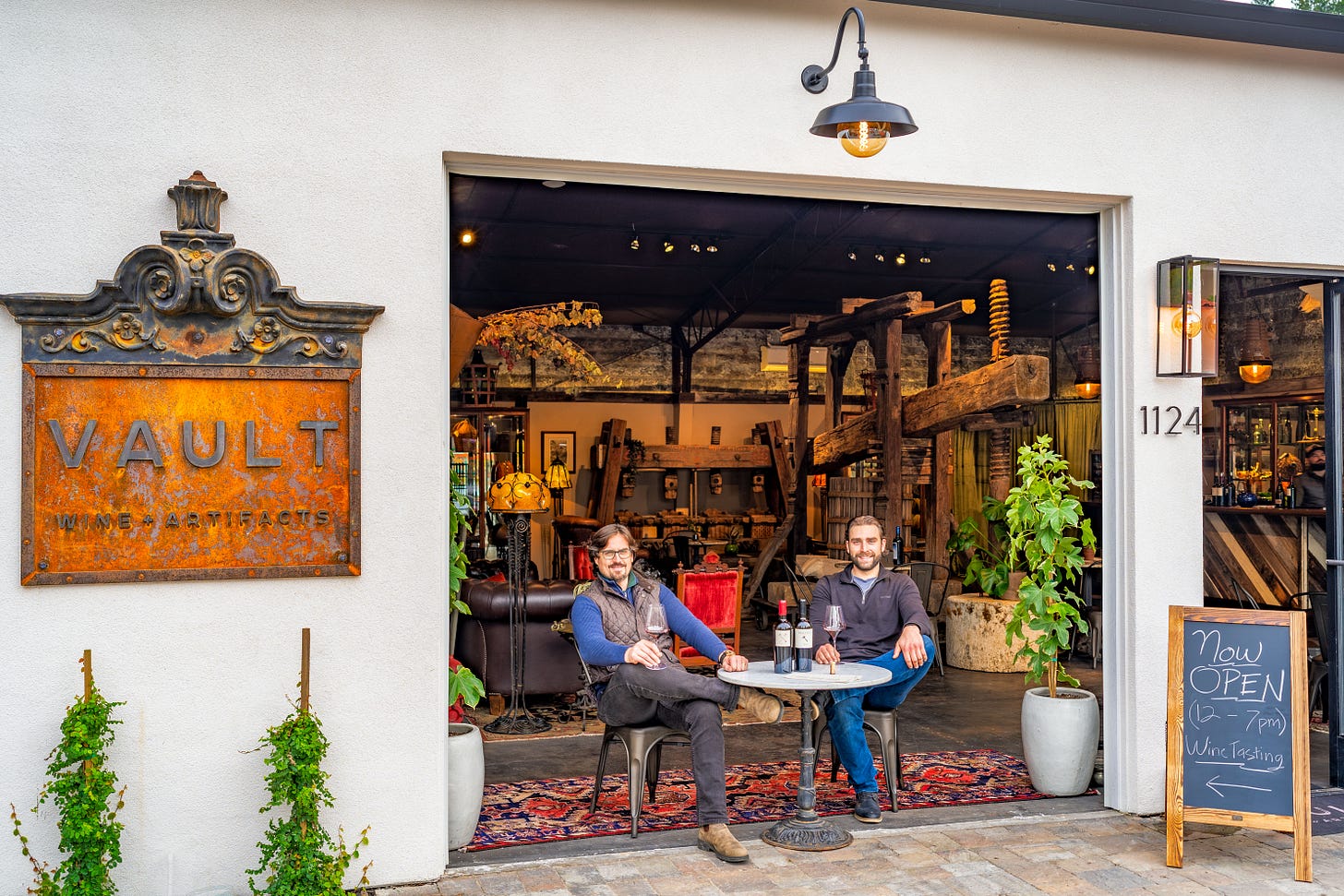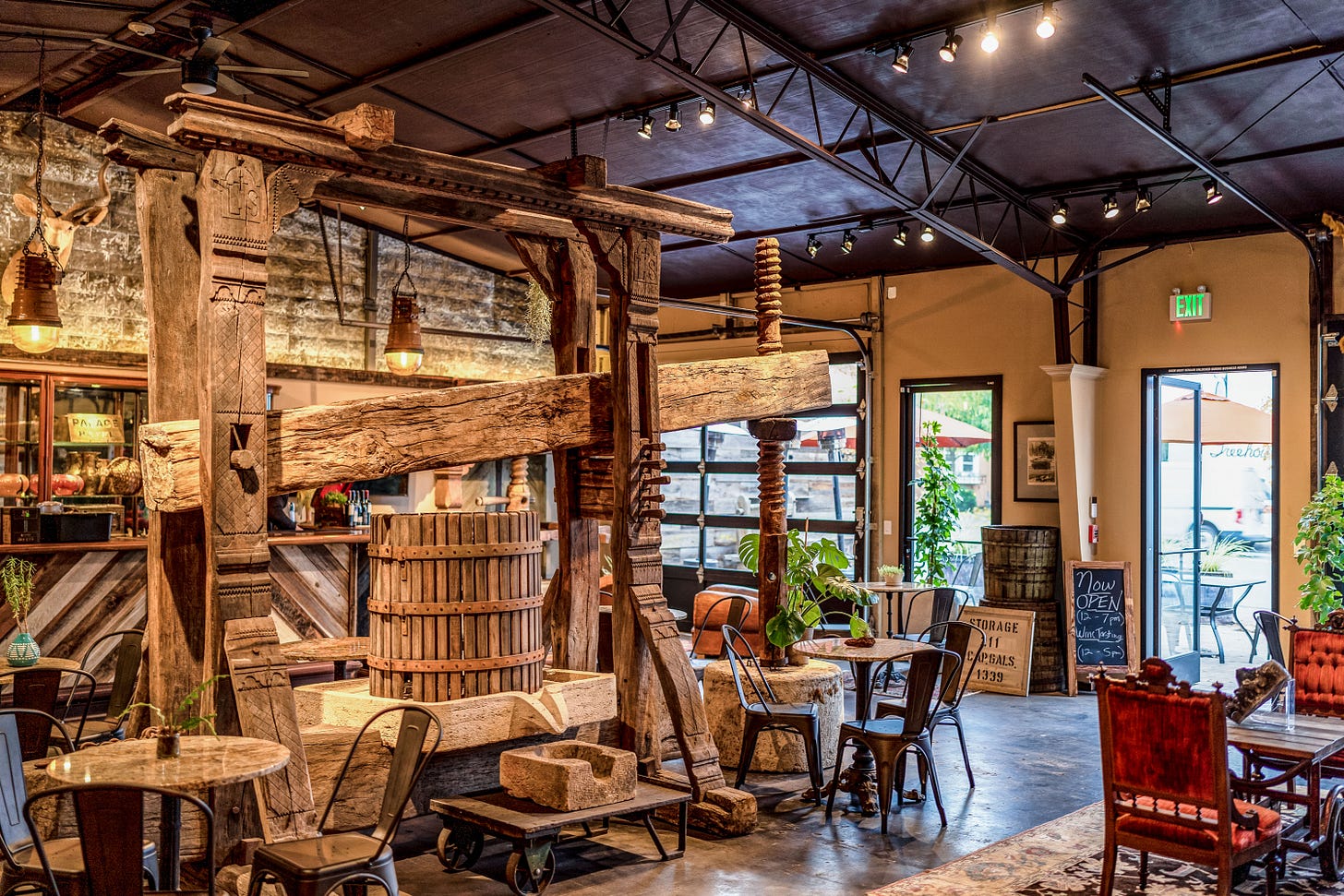NAPA VALLEY, Calif. — In recent years the term "NFT," or Non-Fungible Token, has repeatedly made headlines in the tech and art sectors. This digital asset, underpinned by blockchain technology, signifies ownership or certification of authenticity for a singular item or piece of content. Recently NFTs have started to percolate into one of the most traditional industries — the wine business. Napa Valley, globally renowned for its wine production, is dipping its collective toe into what looks to become an innovative convergence of technology and oenology.
A recent initiative is courtesy of Peju Winery, a family-owned, woman-led winery based in Rutherford. As part of its 40th anniversary celebrations, the winery has employed NFTs in a project titled The Heart of Peju Collective. This endeavor collaborates with emerging artists to design custom wine labels for their limited-run 2019 HB Reserve Cabernet Sauvignon 3L bottles. What sets these bottles apart is that each is accompanied by a physical art piece and its corresponding digital ownership, represented as an NFT.
In Calistoga, The Vault, owned by Mario Roam Sculatti and his business associate, Trevor Mallett, serves as a nexus for enthusiasts to discover lesser-known wines of Napa Valley. Recently they have also stepped into the digital era, offering wine NFTs, conferring digital ownership of exclusive wines alongside physical ownership.

The application of NFTs by the wine industry isn't limited to coupling digital art with physical products, however. It presents a new framework for establishing and authenticating the provenance of wines, potentially offering a novel solution to the longstanding problem of wine counterfeiting.
To understand the context, let's start with some definitions.
Non-fungible tokens denote unique digital assets conferring ownership rights over exclusive items or content. These could represent a unique piece of digital art or a collectible. Gaining rapid popularity in the art world, NFTs have carved a niche for themselves, enabling artists to monetize their digital creations and allowing collectors to acquire and own unique pieces. Blockchain is the underlying technology that supports NFTs.
Blockchain is a decentralized digital ledger that records transactions across multiple computers. Each block in this chain encompasses several transactions and is connected to the preceding block, thereby forming a sequential history of blocks. This structure guarantees a secure and transparent method to trace and authenticate digital transactions. Every participant in the network maintains a copy of the ledger, ensuring its integrity as any alterations require network consensus.
Cryptocurrency, a type of digital or virtual currency, can be developed on the blockchain. It operates independently of any central banking system. Bitcoin, the trailblazer cryptocurrency — although no one knows who created it — is the most well-known, along with others such as Ethereum, all of which are built on the blockchain. They are deemed more transparent and traceable than others developed using alternate technologies like the directed acyclic graph, commonly known as the “Tangle.”
OpenSea, a well-known online marketplace utilizing the Ethereum blockchain infrastructure, facilitates the purchase of numerous NFTs today. OpenSea empowers users to trade NFTs using cryptocurrency and also provides a platform for artists and creators to "mint" and sell their NFTs.
NFT enthusiasts often form a community, typically referred to as a DAO (decentralized autonomous organization). DAOs are structured as organizations governed through predefined rules programmed on a blockchain instead of being controlled by a central authority. With the aim of decentralization, DAOs operate independently, eliminating the need for intermediaries. They use smart contracts, which are self-executing contracts with the terms of the agreement directly embedded in the code, to supervise their operations and decision-making processes.
Although NFTs are relatively "easy" to create, there are advantages and disadvantages for those seeking to employ them in the wine industry.
The advantages
Authenticity and provenance: NFTs have the potential to transform the way wine provenance is traced and validated. Each bottle of wine could be paired with an NFT that records and verifies its journey from vine to glass. This digital trail could comprise data about the grapes used, the fermentation process, bottling information and shipping details. This degree of transparency could significantly deter counterfeiting and aid consumers in making more informed purchasing decisions.
Marketing opportunities: As demonstrated by Peju Winery, NFTs can provide unique marketing and branding opportunities. By pairing wines with digital art, wineries can enhance the perceived value and exclusivity of their products. Furthermore, it opens up creative collaborations between wineries and digital artists, as seen with The Heart of Peju Collective, which features work from six international female artists.
Investment and ownership: NFTs could turn wine into a more viable investment asset. Since NFTs represent ownership, an NFT of a bottle could be traded or sold independently of the physical product. This permits speculative trading based on a wine's potential future value, as The Vault in Calistoga is exploring.
The drawbacks
Environmental concerns: A significant critique against NFTs is their environmental impact. Most NFTs are developed on the Ethereum blockchain, which currently employs a proof-of-work system that is energy-intensive. As the wine industry continues to prioritize sustainability, the environmental footprint of NFTs is an aspect that cannot be ignored.
Accessibility and understanding: Blockchain technology and NFTs are intricate and can be challenging for the average consumer to comprehend. Wine enthusiasts who favor traditional methods may be hesitant to adopt such technology. Also, participation in the NFT market requires digital literacy and access to certain technological resources, which may exclude some consumers.
Legal and regulatory issues: The rapid ascendance of NFTs has outpaced legal and regulatory frameworks. Issues related to intellectual property rights, taxation and consumer protection are still being sorted out in many jurisdictions. There is also the fact that the sale of alcohol is a highly regulated act, making the speculative resale of wine NFTs potentially impossible, or at the very least, complicated. As any of these uncertainties could lead to legal action, disputes or losses, they represent a potential risk for wineries and consumers alike.
Cost: Creating and trading NFTs involves costs. From the “gas fees” associated with Ethereum transactions to the initial expense of creating an NFT, the process isn't inexpensive. These costs could potentially be passed onto the consumer, making wines associated with NFTs more costly.
The introduction of NFTs in Napa Valley's wine industry is a fascinating example of how traditional sectors are attempting to harness new technologies. With the right balance, NFTs could infuse a breath of innovation into the world of wine, touching everything from provenance-tracking to branding. As with any technology, however, it is critical to carefully navigate potential drawbacks, ensuring that the embrace of the new doesn't undermine the cherished heritage of the old.








I think I might have understood at least 3 sentences. I was so hoping this would be the article that would help me to finally understand all this. Thanks for trying!!
Terrific article that explains so many important components on NFTs and concerns around sustainability. Thank you for this article!